*NURSING > CASE STUDY > GI PANCREATITIS(1) Assessment & Reasoning GI System (All)
GI PANCREATITIS(1) Assessment & Reasoning GI System
Document Content and Description Below
Peggy Scott, 48 years old Suggested GI/GU Nursing Assessment Skills to Be Demonstrated: GI/GU: Inspection: skin (coloration, vascularity, striae, scars, lesions, rashes) ● Contour from 2 angles... – (flat, rounded, scaphoid, protuberant/distended) ● Note symmetry, color, veins, lesions, scars, hair distribution ● Umbilicus – contour; Note: inguineal or umbilical hernias ● Symmetry (relaxed, supine position) ● Abdominal movement during breathing ● Aortic pulsations Auscultation: (completed before palpation/percussion to not alter bowel sounds) ● Bowel sounds – 1 minute per quadrant up to 5 minutes with the diaphragm ● Intensity, pitch, frequency ● Vascular sounds – listen for bruits in abdominal aorta with bell. Palpation: ● Light palpation to all quadrants – 1 to 2 cm to detect tenderness ● Deep palpation to all quadrants – 5 to 6 cm for masses (location, size, shape, pulsatility, mobility, tenderness) ● Palpate bladder- light palpation ONLY; you only want to assess to see if it is distended ● Check for costovertebral angle tenderness Make Learning Active! ● Role play or go through the interview/body assessment process – student to student or as a group. ● Review the case study as an application exercise in small groups or together as a class. ● Depending on your program, some content in the case study may not have been taught. Do not let that prevent you from utilizing this case study! Use it to promote learning by having students identify what they do not yet know and guide where they can find the information in the textbook or on the internet to address knowledge gaps. This is educational best practice and another way to scaffold knowledge! Present Problem: Peggy Scott is a 48-year old African American woman who came to the emergency department because she is having severe abdominal pain radiating to the back that started 24 hours ago but has become progressively worse in the last couple of hours. She is now nauseated and states that she has “puked small amounts of green liquid” five times in the last four hours. She had two loose stools today that were dark brown or black in color. Peggy has struggled with ETOH use/abuse most of her adult life but has been sober the past six months. She begins to cry and tells the nurse that this week was the one-year anniversary of her only son’s death in an automobile accident. She reports that she has been drinking one liter of vodka daily the past week. What data from the present problem are RELEVANT and must be interpreted as clinically significant by the nurse? (Reduction of Risk Potential) RELEVANT Data from Present Problem: Clinical Significance: 1.Severe abdominal pain that radiates to her back began within 24 hours 2.She has nausea and has stated she has “puked small amounts of green liquid” five times in the last four hours. 3.She has had two loose stools that were dark brown/black in color. 4.ETOH during her whole adult life but she has been sober for six months. 5.She is grieving the loss of her only son and has been drinking one liter of vodka daily this past week. 1.Severe abdominal pain in the LUQ of her abdomen that radiates to the back is a clinical manifestation of Acute Pancreatitis and that is inflammation of the pancreas. 2.Vomiting green liquid and the green liquid is bile and she can be throwing it up due to high consumption of vodka or she can be throwing up the contents of her stomach 3.She has had two loose stools dark brown/black in color and that can be a sign of bleeding in her intestines, a medication that she is taking that changes the color of her stool, or it can be a food she has consumed. 4.ETOH is an abbreviation for ethanol alcohol and she has been sober for 6 months. 5. She has been drinking one liter of vodka every day for the past to cope with the loss of her son What is the RELATIONSHIP of your patient’s past medical history (PMH) and current meds? (Which medication treats which condition? Draw lines to connect.) PMH: Home Meds: Pharm. Class: Mechanism of Action (own words): Depression Low back pain Pancreatitis (no current meds) ETOH abuse (no current meds) ● Ibuprofen 600 mg PO three times daily PRN ● Citalopram 40 mg PO daily NSAID Selective serotonin reuptake inhibitor(SSRI) Ibuprofen is used for her lower back pain and it creates analgesics and works as an anti inflammatory to inhibit the prostaglandins at the site of inflammation. Citalopram is used for her depression and it works by restoring the levels of serotonin in the body Patient Care Begins: Current VS: P-Q-R-S-T Pain Assessment: T: 100.6 F/38.1 C (oral) Provoking/Palliativ e: Movement provokes, nothing relieves pain P: 98 (regular) Quality: Sharp R: 20 (regular) Region/Radiation: Epigastric area/LUQ BP: 146/94 Severity: 10/10 O2 sat: 95% room air Timing: Continuous since onset 24 hours ago [Show More]
Last updated: 1 year ago
Preview 1 out of 15 pages
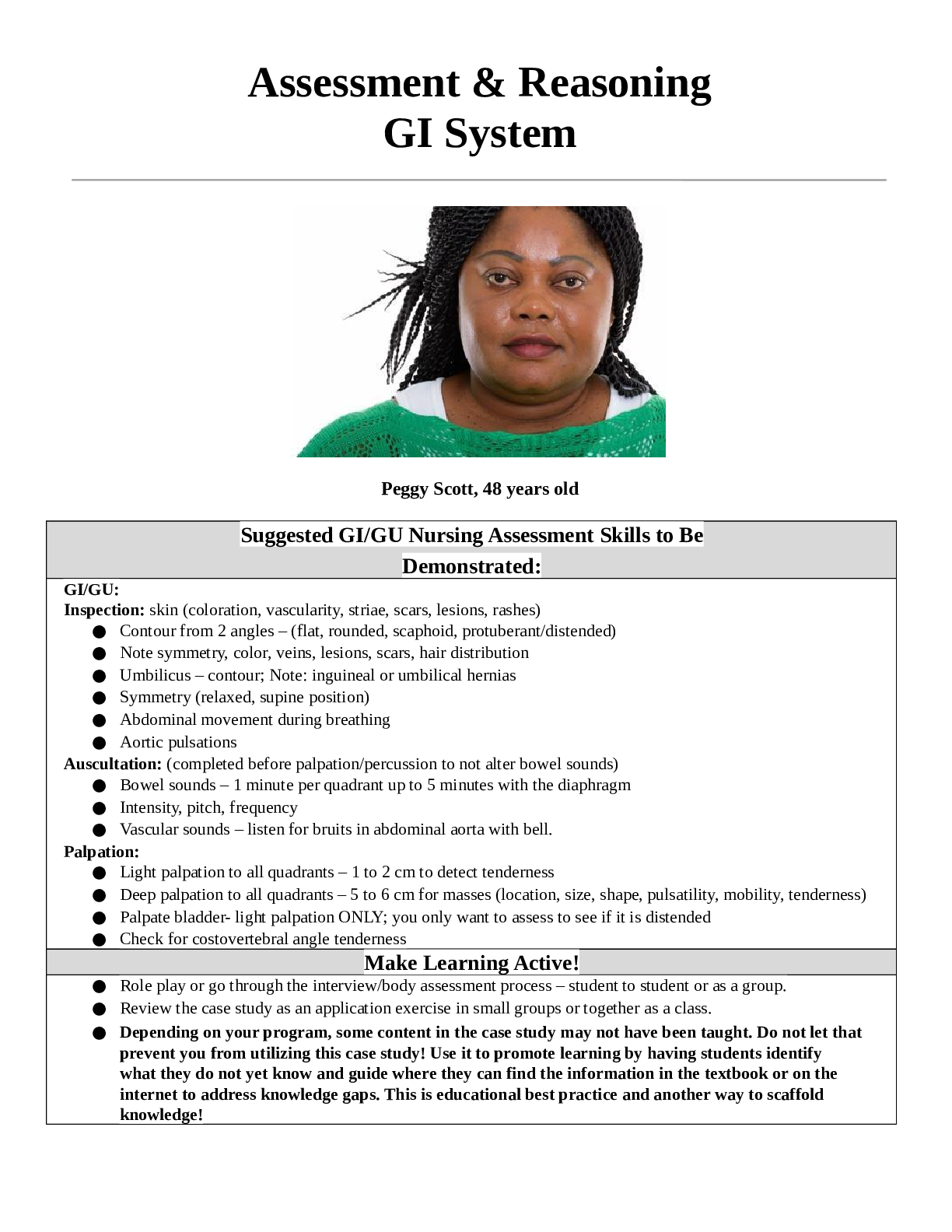
Reviews( 0 )
Document information
Connected school, study & course
About the document
Uploaded On
Sep 07, 2021
Number of pages
15
Written in
Additional information
This document has been written for:
Uploaded
Sep 07, 2021
Downloads
0
Views
36





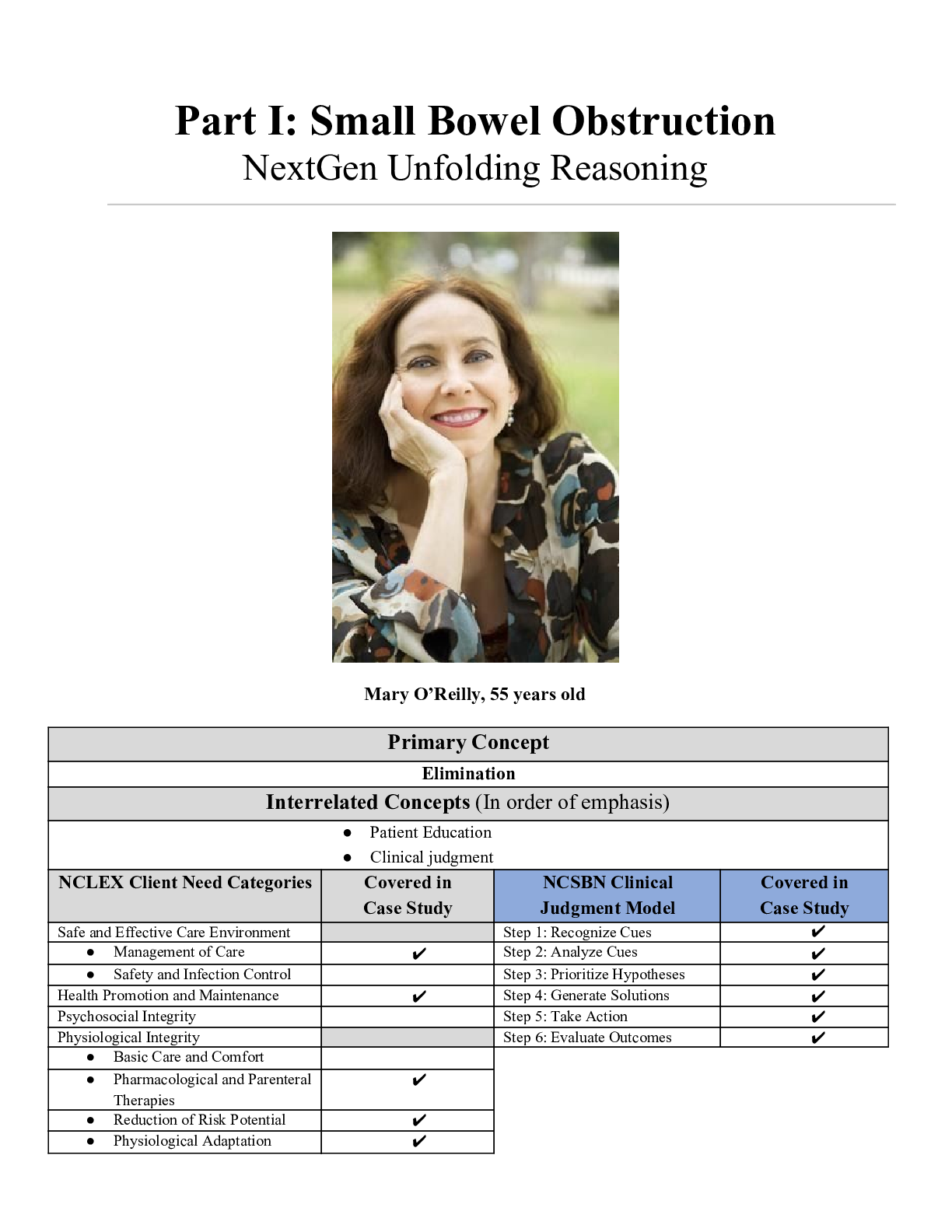


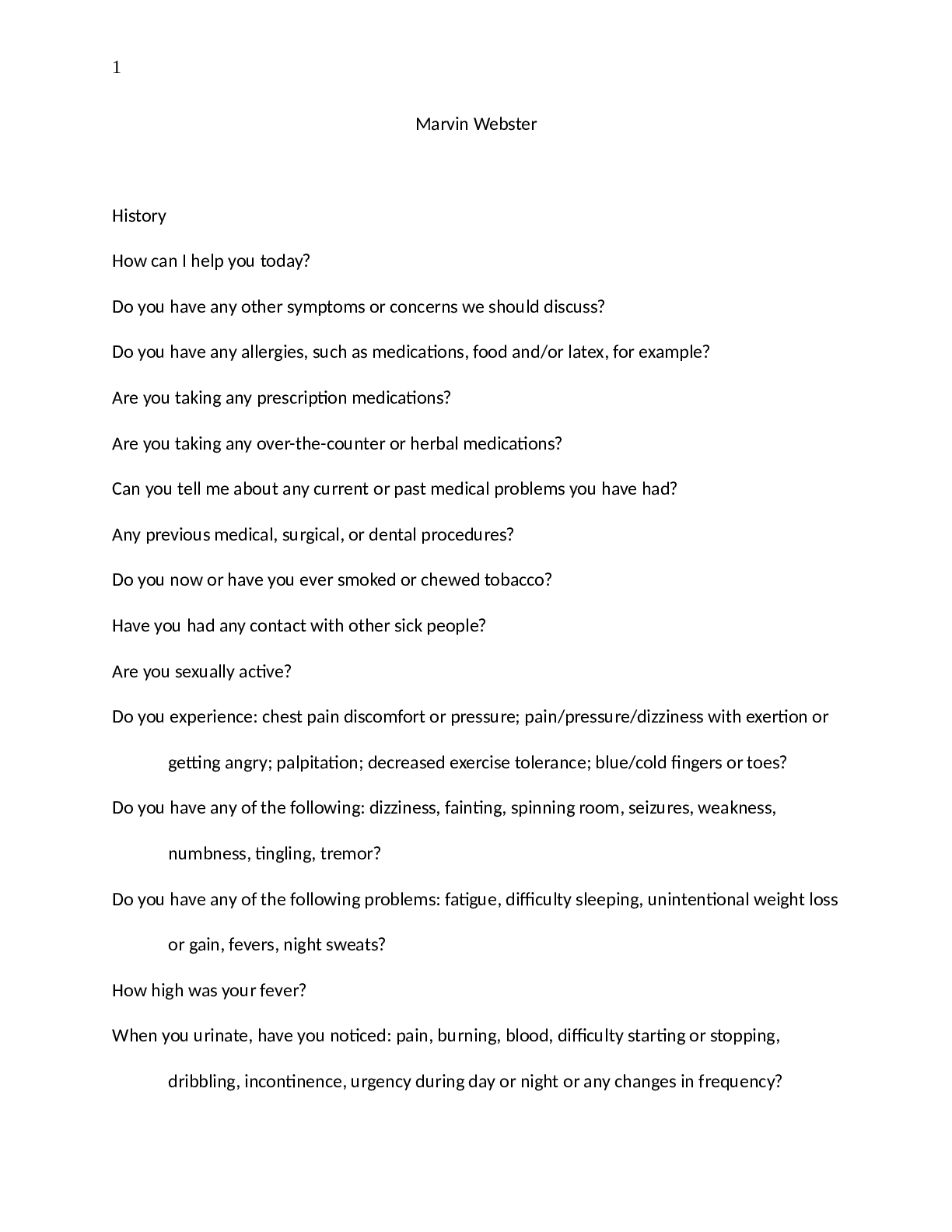

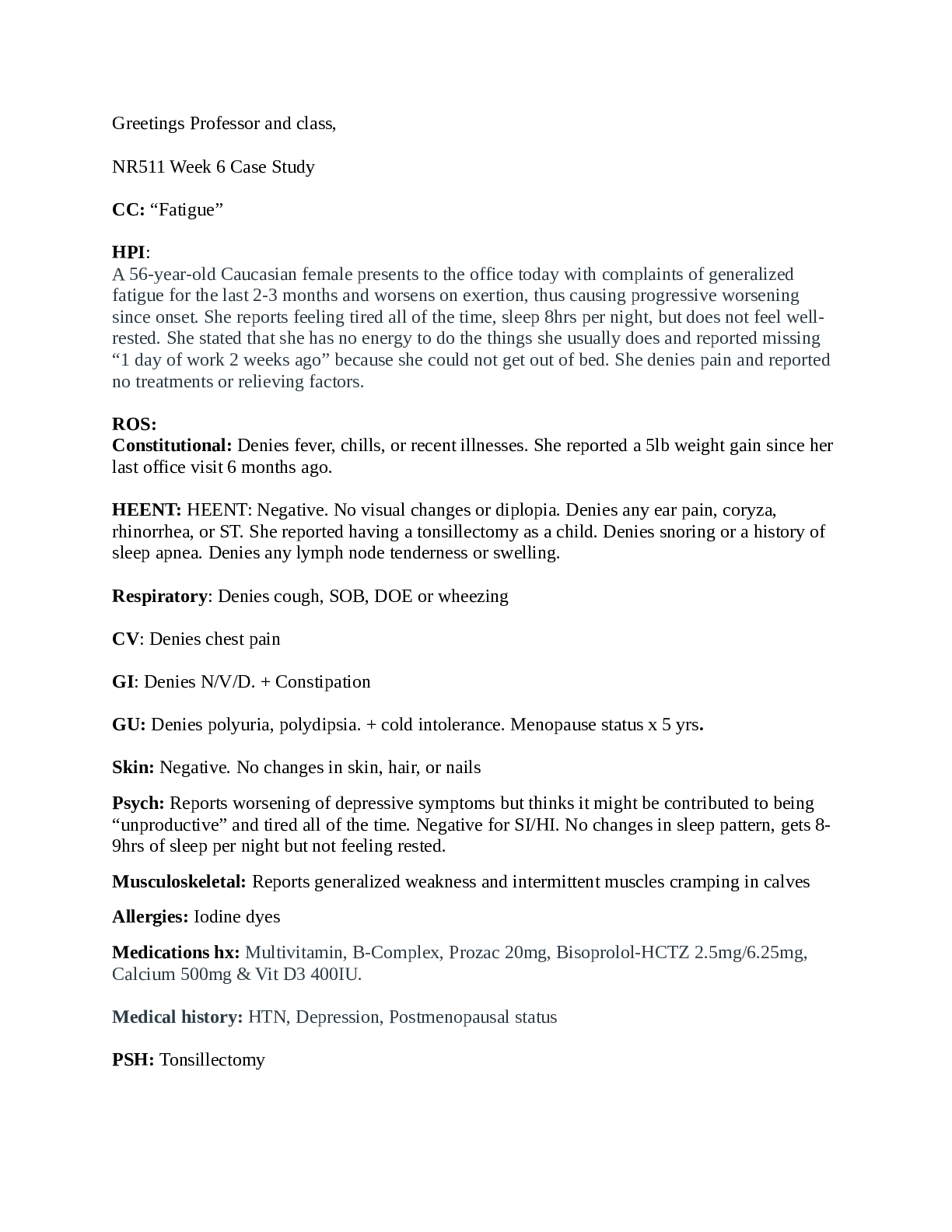
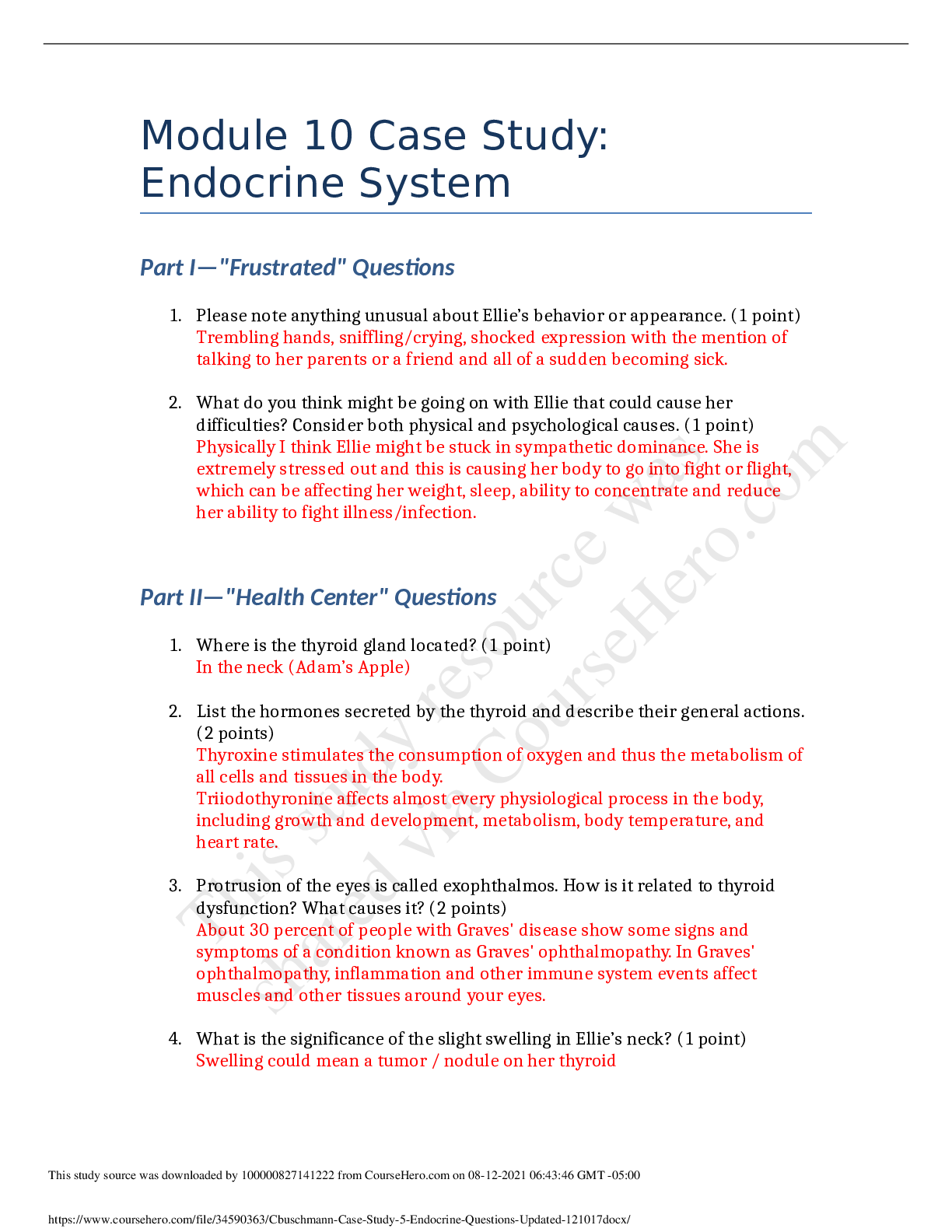


.png)


 Correct Study Guide, Download to Score A.png)
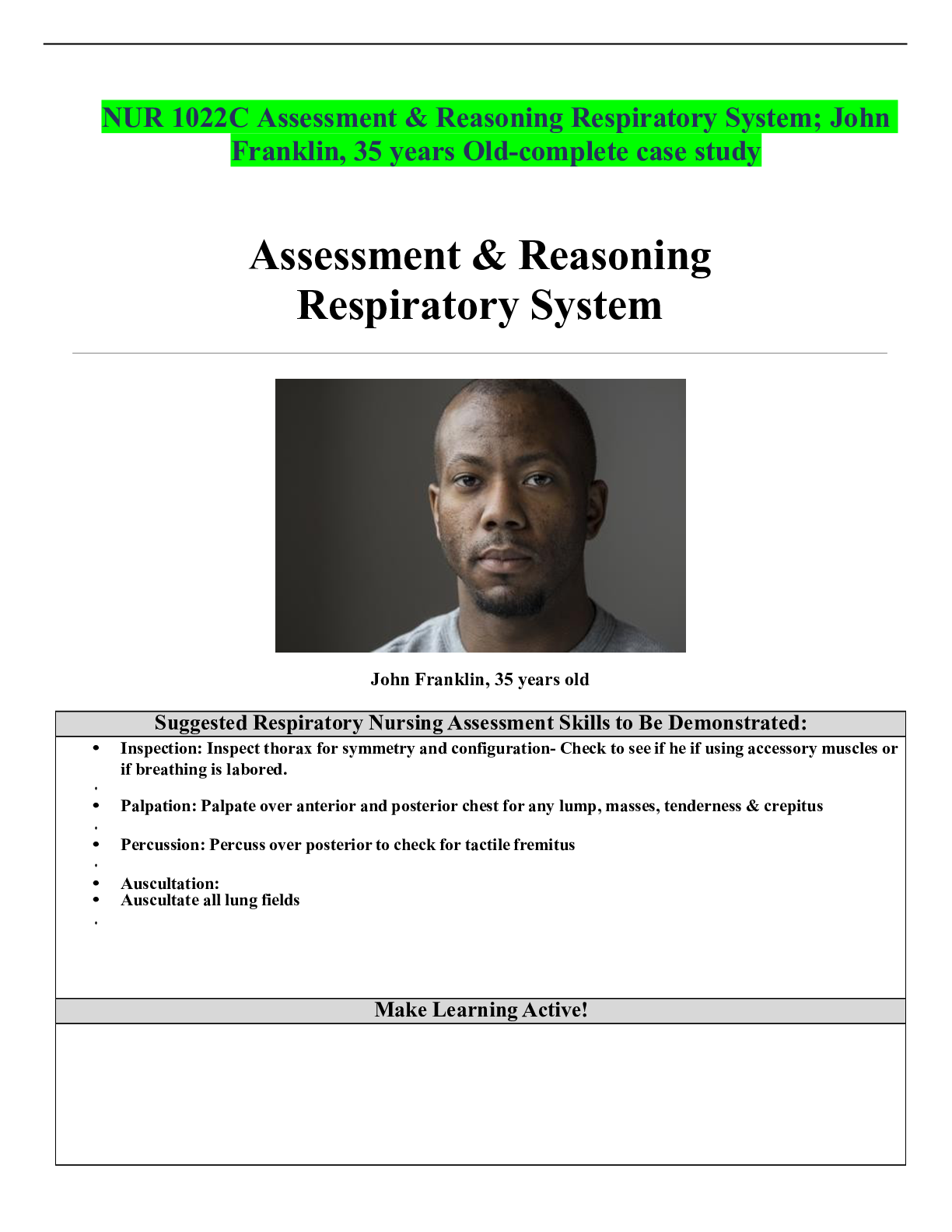


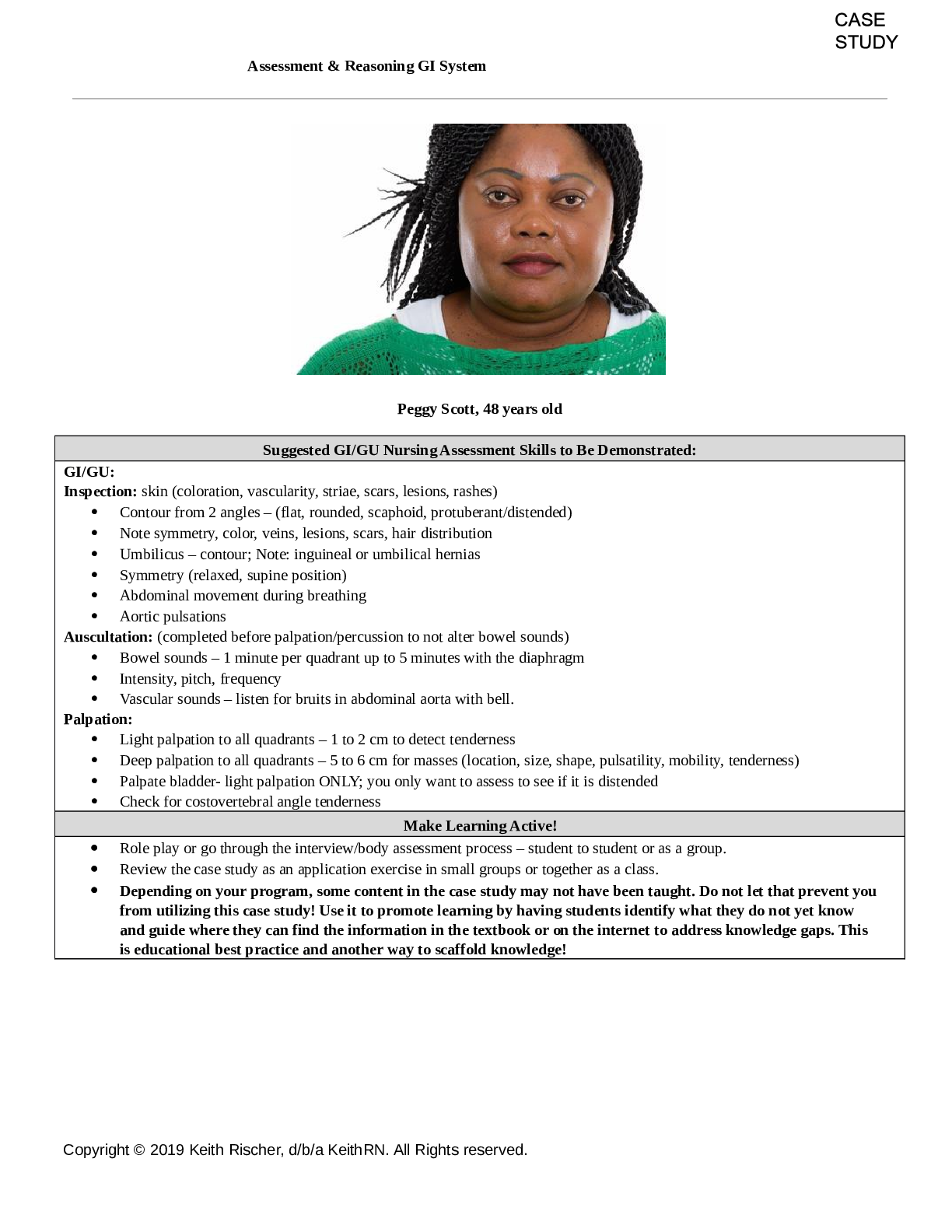
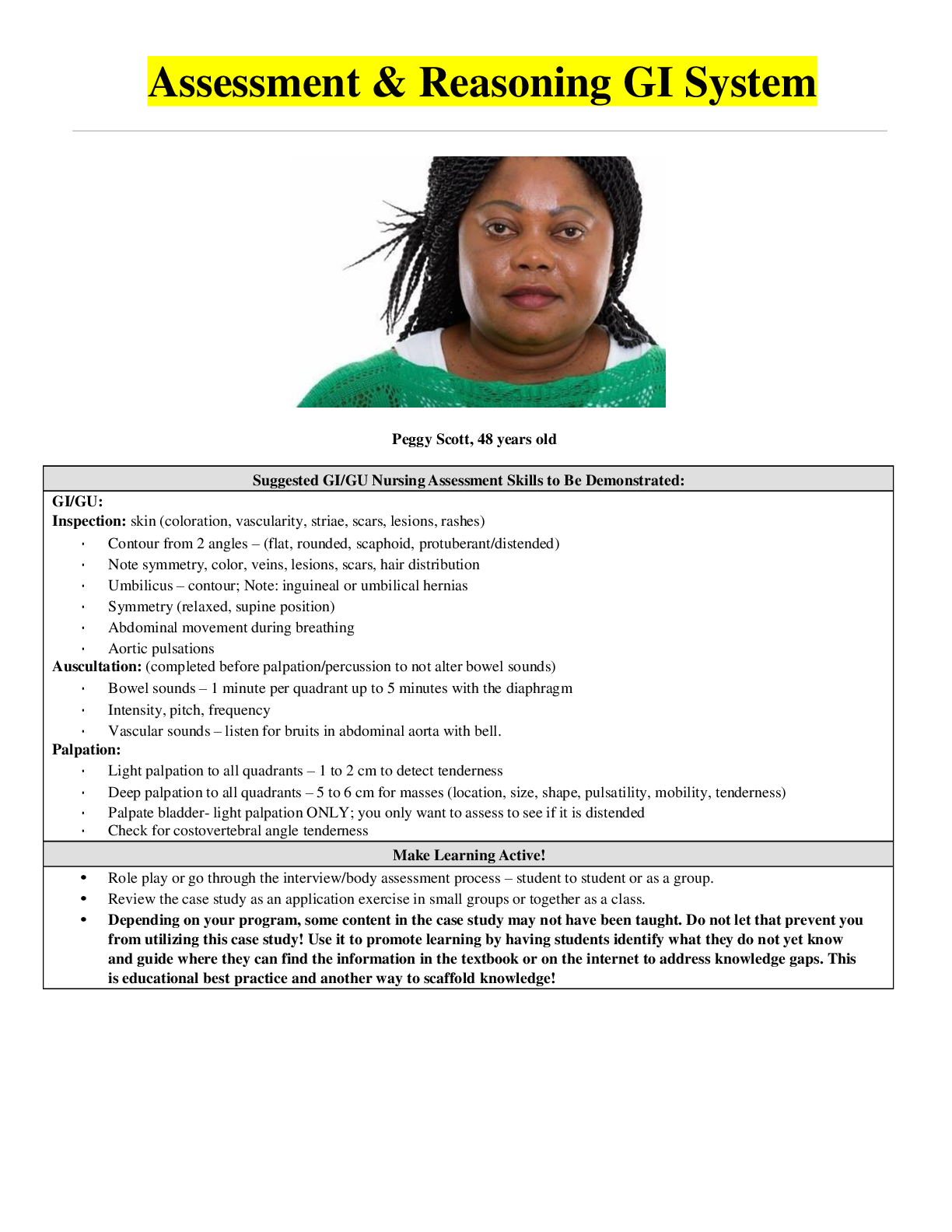
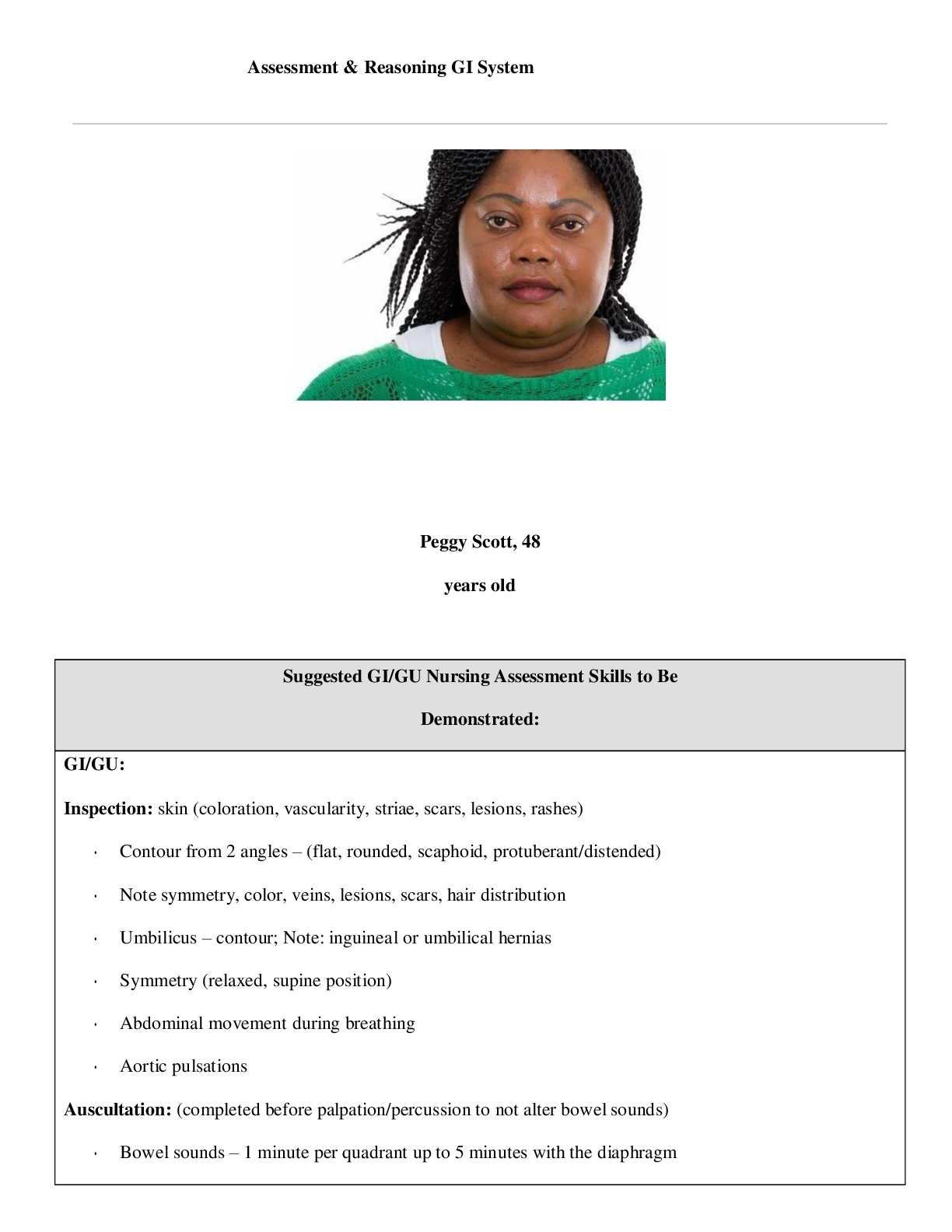
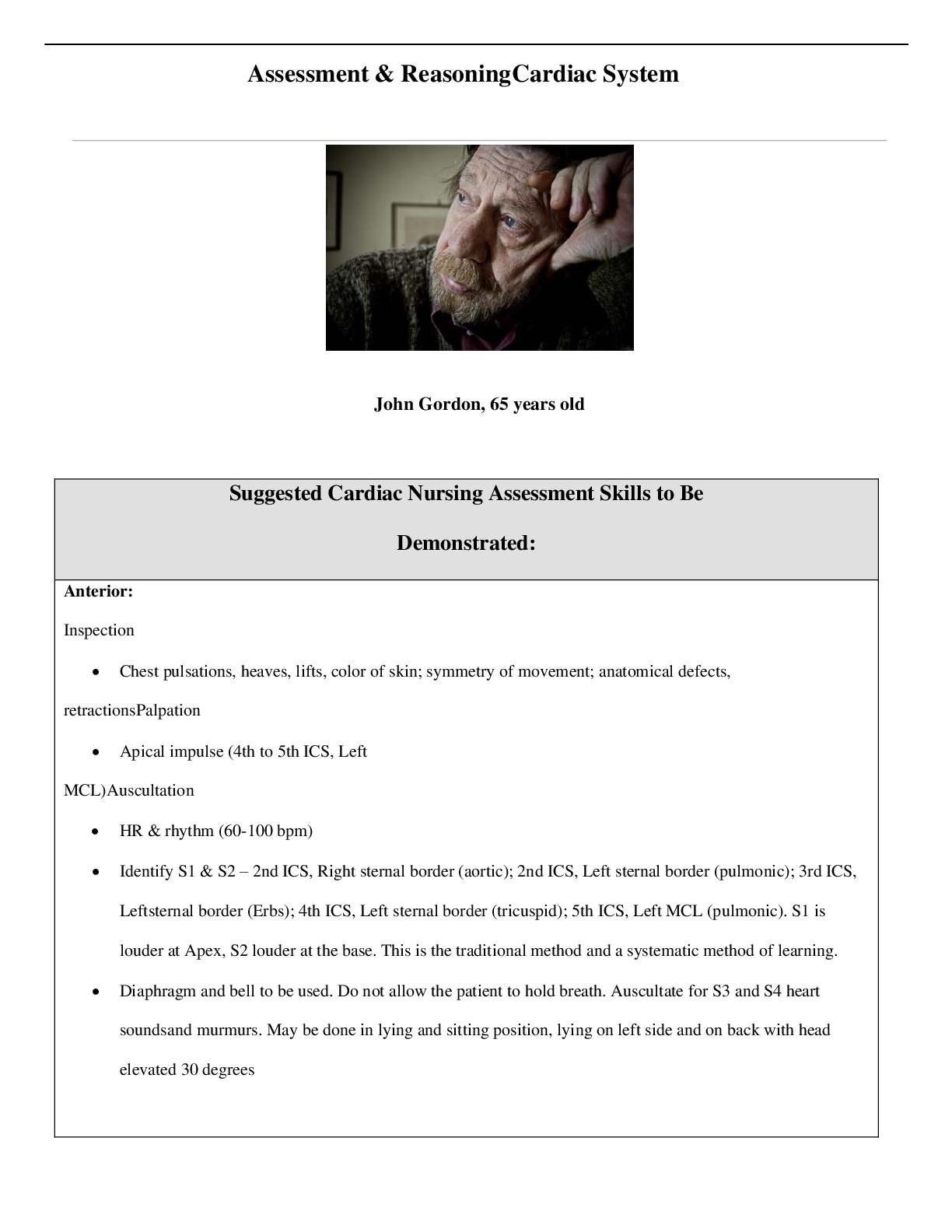

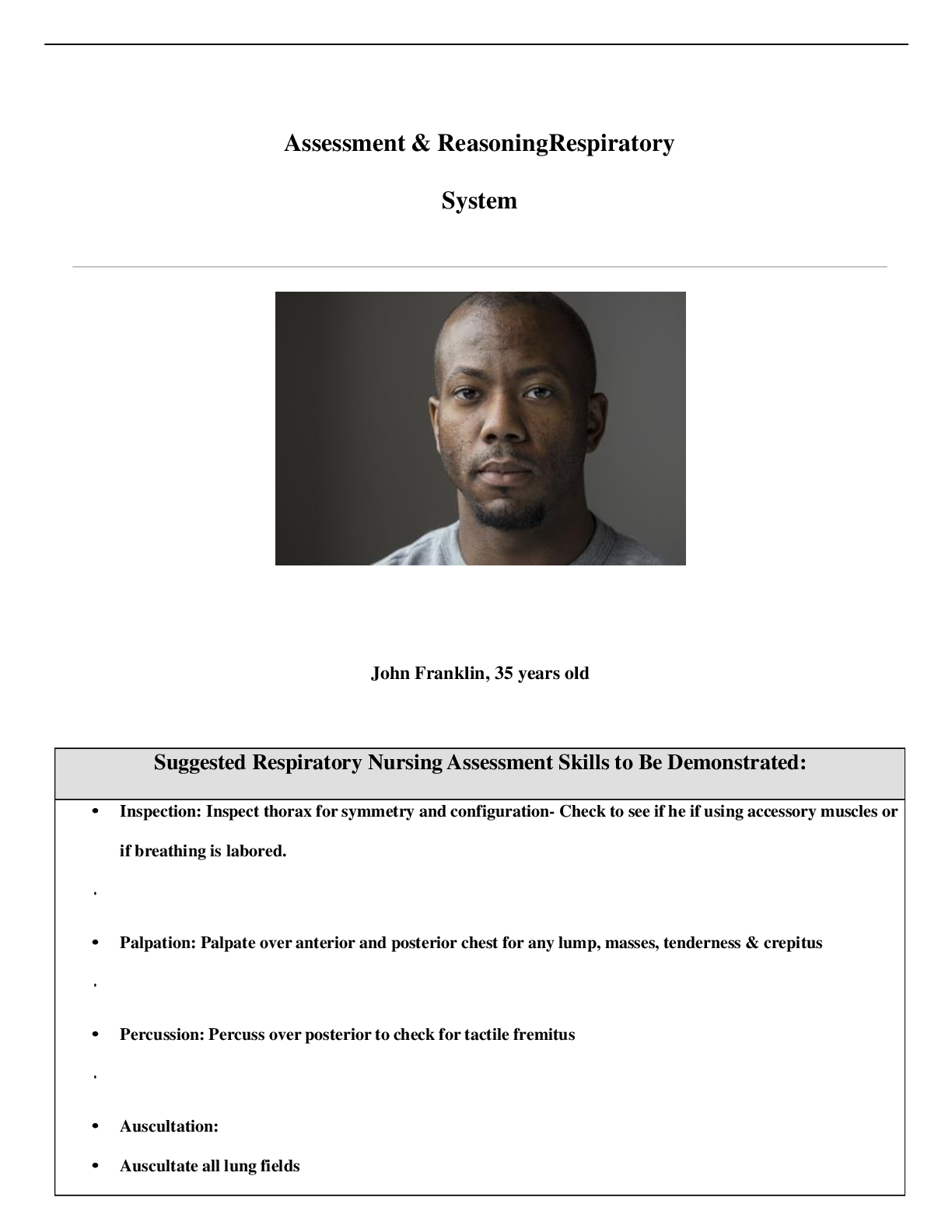


 Correct Study Guide, Download to Score A.png)

